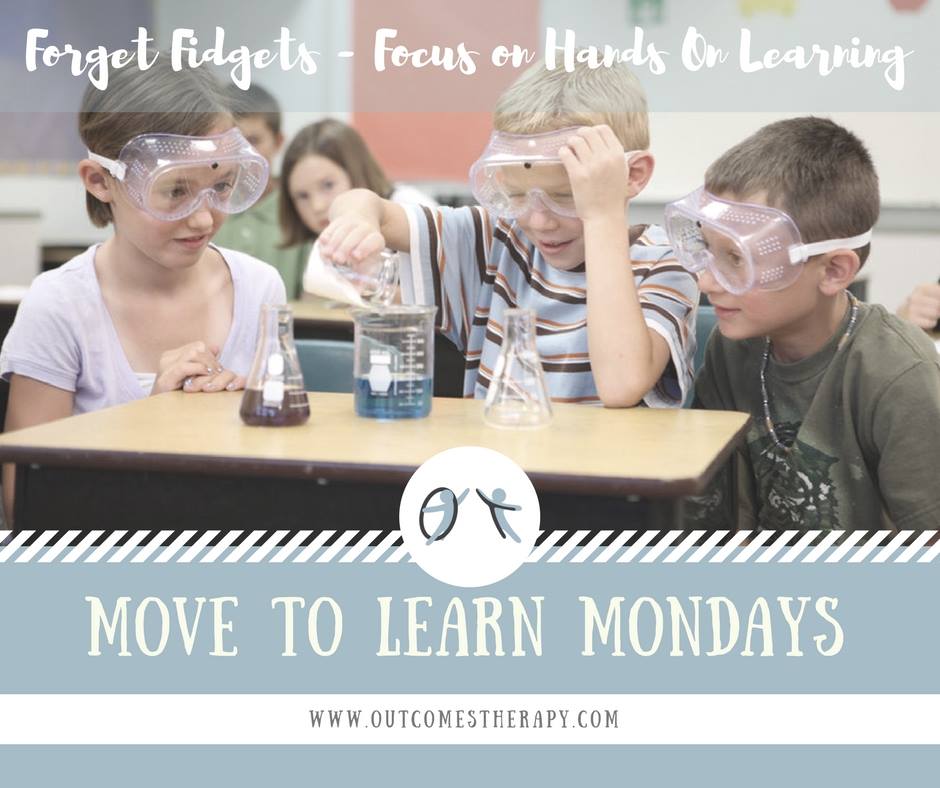It’s Move to Learn Monday. Over the past few months, there has been literally a firestorm of discussions regarding fidgets. I have also been amazed as when people find out that I am an occupational therapist, one of the first questions they ask me is what I think about fidgets (and specifically what I think about a certain type of fidget that shall remain nameless). So today, I thought I would tackle this issue and share some of my thoughts on the use of hand fidgets at school.
In the classroom, we want children to question, to learn, to socialize and to be inspired. We move children through routines to support their learning and development. We know that calm, focused, regulated children learn and achieve more. Hence we have focused on strategies and supports to optimize self-regulated learning.
One class of tools for fostering self-regulated learning are tools for the hands (along with tools for the body, mouth, eyes, ears, mind, and nose). To support regulated learning, we are often quick to recommend a variety of commercially acquired fidgets to support children’s regulation in the classroom. From my experience, these fidgets are often toylike, frequently distract as opposed to support learning, and last minutes before the child becomes bored with the “tool.” I will add a side note that there are times when a distracting fidget can be beneficial – for example when the goal is to stop a child from touching the walls as they walk down the hall – but, from my perspective, this is a bit different that listening and learning in class. During story time or during a class lesson, we want students to engage in the learning – engage in the lesson. Therefore, our first step, if we have students that needs to move their hands as they learn is to provide them with HANDS-ON MATERIALS, MANIPULATIVES, & ITEMS RELATED TO THE LESSON.
Your fidgets are your hands-on materials. Your fidgets are your manipulatives. Your fidget is the pen or pencil or crayons (write notes, draw pictures or doodle related to the topic, colour a picture related to the topic being discussed). Your fidget can be as simple as providing play dough or lego to create an object related to the lesson. Be creative – but keep it focused on the learning.
In summary, many children benefit from hands on learning. Use materials related to learning to engage the hands. If you are in doubt as to whether your tool is effective, talk to the child. If the item is helping them engage in the learning process – keep it. If it is distracting them – work with them and help them understand that together we need to choose another tool – one that will help them learn. This is truly our role and goal as professionals working in the educational system – to help children learn how they learn.
Now I know that this is a controversial issue. I hope that this perspective elicits some great discussion in the comments section below. If you have a moment, please share your thoughts. I look forward to reading the diverse perspectives.

